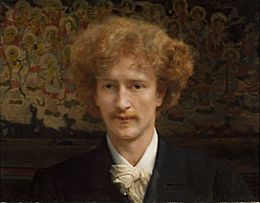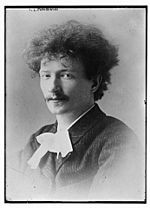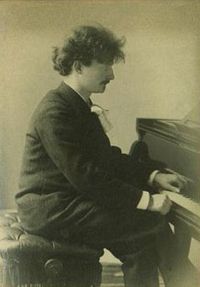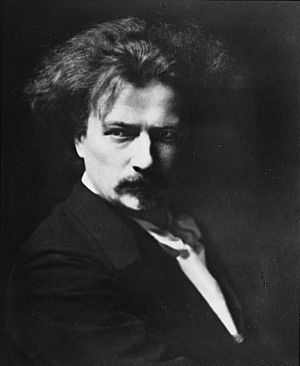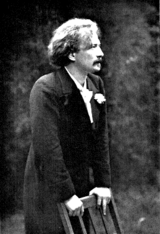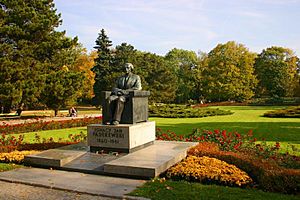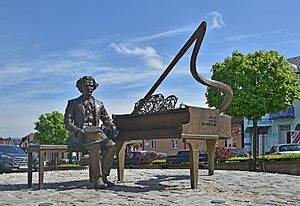Ignacy Jan Paderewski facts for kids
Quick facts for kids
Ignacy Jan Paderewski
|
|
|---|---|

Paderewski circa 1935
|
|
| 3rd Prime Minister of Poland | |
| In office 18 January 1919 – 27 November 1919 |
|
| President | Józef Piłsudski (Chief of State) |
| Preceded by | Jędrzej Moraczewski |
| Succeeded by | Leopold Skulski |
| Minister of Foreign Affairs | |
| In office 16 January 1919 – 9 December 1919 |
|
| Prime Minister |
|
| Preceded by | Leon Wasilewski |
| Succeeded by | Władysław Wróblewski |
| Chief of the National Council of Poland | |
| In office 9 December 1939 – 29 June 1941 |
|
| Personal details | |
| Born |
Ignacy Jan Paderewski
6 November 1860 Kurilovka, Podolia Governorate, Russian Empire |
| Died | 29 June 1941 (aged 80) New York City, US |
| Spouses |
|
| Children | 3 |
| Education | Warsaw Conservatory |
| Profession | Pianist, composer, politician, diplomat |
| Signature | |
Ignacy Jan Paderewski (born November 18, 1860 – died June 29, 1941) was a famous Polish pianist, composer, and politician. He was a strong voice for Poland's independence. In 1919, he served as Poland's prime minister and foreign minister. During this time, he signed the Treaty of Versailles, which officially ended World War I.
Paderewski was loved by concert audiences worldwide. His fame in music helped him get involved in diplomacy and connect with important people. During World War I, he worked hard for an independent Poland. He toured the United States and met with President Woodrow Wilson. Wilson later supported the idea of an independent Poland in his famous Fourteen Points at the Paris Peace Conference in 1919. This led to the Treaty of Versailles.
After leaving his government roles, Paderewski went back to his concert career to earn money. He rarely visited Poland after that, as the country was politically unstable. His last visit was in 1924.
Contents
Early Life and Musical Beginnings
Paderewski was born to Polish parents in a village called Kurilovka. This village was in the Podolia Governorate of the Russian Empire, which is now part of Ukraine. His father, Jan Paderewski, managed large estates. His mother, Poliksena, passed away a few months after he was born. He was mostly raised by relatives.
From a young age, Paderewski loved music. He first lived with his father near Zhytomyr. After his father was arrested in 1863, Paderewski was cared for by his aunt. Later, his father remarried and moved to Sudylkov.
Paderewski first took piano lessons from a private teacher. In 1872, at age 12, he went to Warsaw and joined the Warsaw Conservatory. After graduating in 1878, he became a piano tutor there. In 1880, he married Antonina Korsakówna, a fellow student. Their son, Alfred, was born with a severe disability the next year. Antonina died weeks later from childbirth complications. Paderewski then decided to focus completely on music. He left his son with friends and went to Berlin in 1881 to study music composition.
In 1884, a meeting with the famous Polish actress Helena Modrzejewska helped start his career as a piano virtuoso. She helped arrange a concert in Kraków to raise money for his piano studies. This was a huge success. Paderewski then moved to Vienna to study with Theodor Leschetizky. On May 31, 1899, he married his second wife, Helena Paderewska. She had cared for his son Alfred (who died in 1901). They did not have children together.
A World-Famous Musician
After three years of hard work and teaching, Paderewski performed his first big concert in Vienna in 1887. He quickly became very popular, with successful concerts in Paris in 1889 and London in 1890. Audiences loved his amazing playing. In 1891, Paderewski had great success on an American tour. He would tour the United States over 30 times in the next five decades, and it became like a second home to him. His strong stage presence, good looks, and charm helped his success. This later became important for his political and charity work. His name became known for the highest level of piano playing.
Paderewski kept up a busy schedule of touring and composing. He included many of his own piano pieces in his concerts. He also wrote an opera called Manru. This is the only opera by a Polish composer ever performed at the Metropolitan Opera in New York. Manru is a dramatic work inspired by Wagner's operas. It tells a story about a difficult love triangle, social differences, and prejudice. The story is set in the Tatra Mountains. Besides the Met, Manru was performed in many cities around the world.
In 1904, Paderewski toured Australia and New Zealand. He was the first person to give a solo performance at the new 3,000-seat Carnegie Hall in New York. In 1909, his long Symphony in B minor "Polonia" premiered. Paderewski's compositions were very popular during his lifetime. His piano pieces, especially the Minuet in G major, Op. 14 No. 1, became some of the most recognized piano tunes ever. Despite his busy touring and political work, Paderewski created over 70 orchestral, instrumental, and vocal works.
All of his works show a romantic picture of Poland. They include Polish dances like the polonaise and mazurka. Paderewski's love for his country is clear in the names of his pieces, like "Polish Fantasy" and "Polonia" symphony.
Helping Others Through Charity
Paderewski was a very generous person. In 1896, he gave $10,000 to start a fund to help American composers. This fund supported a competition called the Paderewski Prize. He also started a similar contest in Leipzig in 1898. He was so famous that a music hall duo had a hit song about him in 1916.
By the early 1900s, Paderewski was very wealthy. He gave money to many causes and charities. He also helped fund monuments, like the Washington Square Arch in New York in 1892. Paderewski shared his wealth with people from Poland and with foundations around the world. He created foundations for young American musicians and students at Stanford University (1896) and the Parisian Conservatory (1909). He also funded scholarships and helped unemployed musicians in the United States during the Great Depression (1932). He supported orphanages and a Maternity Centre in New York. He also helped fund monuments for other famous artists like Claude Debussy and Franz Liszt.
Life in California
In 1913, Paderewski moved to the United States. Before World War I, when he was very famous, Paderewski bought a large property in California. It was called Rancho San Ignacio, near Paso Robles. Ten years later, he planted Zinfandel grapevines there. When the grapes were ready, they were made into wine at a nearby winery.
A Leader for Poland
In 1910, Paderewski paid for the Grunwald Monument in Kraków. This monument celebrated the 500th anniversary of the Battle of Grunwald. When the monument was unveiled, it led to big patriotic celebrations. Paderewski spoke to the crowd and showed he was just as good at inspiring people for a political cause as he was with his music. He was not part of any specific political group, which helped him rise above arguments. He could ask people to work together for common goals.
During World War I, Paderewski became an active member of the Polish National Committee in Paris. This group was trying to create an independent Poland. Paderewski became their main spokesperson. He and his wife also started other groups, like the Polish Relief Fund in London and the White Cross Society in the United States. Paderewski encouraged Polish immigrants to join the Polish armed forces in France. He also met with many important people and leaders. He spoke directly to Americans in public speeches and on the radio, asking them to remember Poland's situation. He had such a busy schedule of public appearances and meetings that he stopped touring for a few years to focus on diplomacy.
In January 1917, before the United States joined the war, President Woodrow Wilson's advisor asked Paderewski to write a report on the Polish issue. Two weeks later, Wilson spoke to Congress and said that there should be a "united, independent, autonomous Poland." Creating "New Poland" became one of Wilson's famous Fourteen Points, which were principles for ending World War I.
At the end of the war, Paderewski visited the city of Poznań. After his speech there on December 27, 1918, the Polish people in the city started a military uprising against Germany. This was called the Greater Poland Uprising.
In 1919, after Poland became independent, Józef Piłsudski appointed Paderewski as the Prime Minister of Poland and the Minister of Foreign Affairs. He and another leader, Roman Dmowski, represented Poland at the 1919 Paris Peace Conference. They discussed land claims and rights for minority groups. Paderewski signed the Treaty of Versailles, which recognized Poland's independence after World War I.
Paderewski's time in government lasted ten months. During this time, there were democratic elections, the Treaty of Versailles was approved, laws were passed to protect ethnic minorities, and a public education system was set up. However, Paderewski found it difficult to manage the government and resigned in December 1919. After resigning, he continued to represent Poland abroad in 1920.
Back to Music
In 1922, Paderewski left politics and returned to his musical career. His first concert after a long break, held at Carnegie Hall, was a huge success. He also performed for 20,000 people at Madison Square Garden and toured the United States in his own private train car.
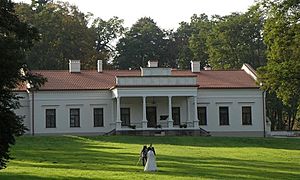
In 1897, Paderewski bought a manor house in Morges, Switzerland, where he rested between tours. After a political change in Poland in 1926, Paderewski became active in the opposition. In 1936, after his second wife passed away, a group of opposition members met at his mansion. This group was nicknamed the Front Morges.
In 1936, Paderewski agreed to appear in a film to show his musical talent. The film, called Moonlight Sonata in Britain, was released in 1937. It is special because it has rare footage of him playing the piano. In November 1937, Paderewski took on one last piano student, Witold Małcużyński.
Return to Public Life During World War II
After the invasion of Poland in 1939, Paderewski returned to public life. In 1940, he became the head of the National Council of Poland, which was like a Polish parliament in exile in London. He again asked America for help. His message was broadcast by over 100 radio stations in the United States and Canada. He spoke in person to get support for Europe and to defeat Nazism.
In 1941, American cities celebrated the 50th anniversary of his first American tour with a "Paderewski Week." Over 6,000 concerts were held in his honor. The 80-year-old artist also restarted his Polish Relief Fund and gave concerts to raise money for it.
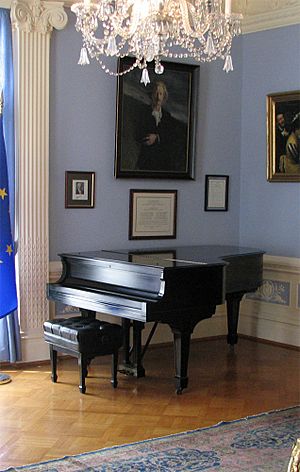
Death and Lasting Impact
Paderewski became ill on tour on June 27, 1941. Doctors diagnosed him with pneumonia. Despite showing signs of getting better, Paderewski died in New York on June 29, 1941, at the age of 80. His remains were later moved to St. John's Archcathedral in Warsaw, Poland, in 1992, after communism ended there. His heart is kept in a bronze sculpture in the National Shrine of Our Lady of Czestochowa in Pennsylvania.
In early 1941, a music publisher asked 17 famous composers to write a piano piece each. This was to celebrate the 50th anniversary of Paderewski's first American performance. The collection, called Homage to Paderewski (1942), became a tribute to his entire life and work.
Museums and Tributes
The Polish Museum of America in Chicago received many of Paderewski's personal items after his death in 1941. Both Ignacy Paderewski and his sister were big supporters of the museum. Another museum honoring him is in Morges, Switzerland.
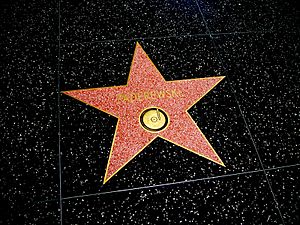
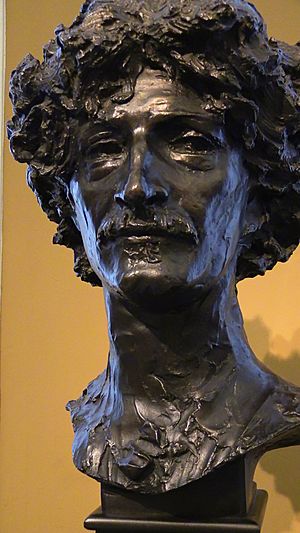
In 1948, the Ignacy Paderewski Foundation was started in New York City. Its goal was to promote Polish culture in the United States. Two other Polish-American groups are also named after him.
The songwriter Irving Berlin mentioned Paderewski in his 1916 song "I Love a Piano": "And with the pedal, I love to meddle/When Paderewski comes this way./I'm so delighted, when I'm invited/To hear that long-haired genius play."
Paderewski's unique combination of being a world-class pianist and a successful politician made him famous. In the 1953 movie The 5,000 Fingers of Dr. T, the piano teacher tells his students he will "make a Paderewski" out of them.
Two music festivals in the United States honor Paderewski every November. The first [Festival] has been held in Paso Robles, California, since 1993. The second [Festival – Raleigh] has been held in Raleigh, North Carolina, since 2014.
The front of White Eagle Hall in Jersey City, New Jersey, has busts of Polish heroes, including Ignacy Jan Paderewski.
Awards and Honors
The Academy of Music in Poznań is named after Paderewski. Many major cities in Poland have streets and schools named after him. Streets are also named after him in Perth Amboy, New Jersey, and Buffalo, New York. Since 1960, Paderewski has a star on the Hollywood Walk of Fame in Los Angeles.
He received many important awards, including:
- Order of the White Eagle (Poland, 1921)
- Legion of Honour, Grand Cross (France, 1929)
- Honorary Knight Grand Cross of the Order of the British Empire (British Empire, 1925)
He also received honorary doctorates from many universities, including Yale University (1917), Oxford University (1920), and Columbia University (1922). He was made an Honorary Citizen of Lviv (1912), Warsaw (1919), and Poznań (1920).
On October 8, 1960, the United States Post Office Department released two stamps honoring Ignacy Jan Paderewski. Poland has also honored him with postage stamps several times.
See also
 In Spanish: Ignacy Jan Paderewski para niños
In Spanish: Ignacy Jan Paderewski para niños
- History of Poland (1918–1939)
- List of Polish composers
- List of Poles


